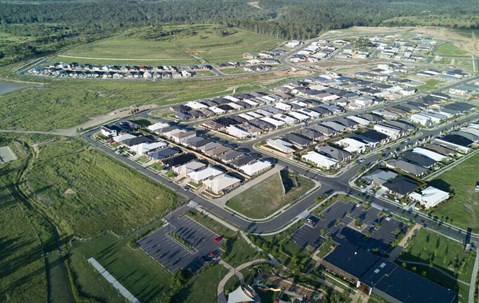News & Tips

From good to great? The year ahead for South East Queensland land
While just a few weeks old, the new year is already shaping as one of the most important in nearly a decade for the south east Queensland land market.
For both property developers and land buyers, including first home buyers and investors, the next 12 months will set the tone for at least the next three years as a slew of economic and political milestones converge.
The last 12 months have been good, but not great, for the Queensland land market. In fact, it would be safe to say that ‘good, not great’ has been the situation for the last 10 years in Queensland.
While Sydney and Melbourne have experienced the usual boom and gloom headlines of a normal property cycle, south east Queensland has been the boring cousin with steady, consistent growth.
This is just a few of the reasons why that may change this year.
It’s all about population
A relatively small population spread over a very large area makes Queensland’s economy particularly susceptible to the ebb and flow of people, particularly interstate migration. If 2018 trends continue and the local economy can keep attracting new residents, 2019 could be the year that Queensland really shines.
Economic growth and the job security it delivers is particularly important for Brisbane (where most new residents move) and the urban growth corridors to Ipswich in the west, Gold Coast to the south and Sunshine Coast to the north.
Thanks to an improving economy with both the mining and tourism sectors on the mend, more and more people are calling Queensland home. The State added nearly 85,000 new people in the 12 months to June 2018 at an annual growth rate of 1.7%, second only to Victoria.
In an encouraging trend, Queensland last year became the most popular state for interstate migration, overtaking Victoria for the top spot for the first time since 2014.
According to the ABS, Queensland’s population is projected to increase by between 700,000 and 1 million people from 30 June 2017 to reach between 5.7 and 5.9 million people by 2027.
The ABS will release their latest quarterly population statistics in March and we will be watching very closely to see if Queensland can leapfrog Victoria to become the fastest growing population in the country.
This is a title Queensland has held many times in the past and it always correlates with strong gains in the property market.
Narrative decoupling
The second half of last year saw the country’s two largest land markets in Sydney and Melbourne begin to moderate and fall as the property clock ticked past midnight after many years of above average growth.
Most analysts expect these markets to struggle for momentum again in 2019 as buyer sentiment takes a hit from the reality of falling prices.
The success of Queensland over the next 12 months and beyond will largely depend on our ability to decouple our market from these bigger markets.
The casual reporting by the news media of major declines and challenges in the ‘property market’ does little to reflect the vast differences that can occur from one place to another. While some influences like access to credit (discussed below) are national and can affect the overall market, many factors, including demand (see population above), are largely local.
Thankfully, we are already beginning to see more sophisticated analysis of the market that draws more clear distinctions between what is happening in Queensland and what is happening further down the coast.
If that distinction becomes crystal clear in the minds of buyers, we could see the local market deliver massive outperformance.
Hayne Royal Commission
The Hayne Royal Commission, while doing a great job of exposing many unethical and immoral practices in the banking sector, has had the unintended consequence of creating a mini credit crunch.
Land markets are driven almost exclusively by young first home buyers and investors. When banks tighten credit these are the markets which feel the pressure first. At the coal face we see first-hand the challenge buyers face when trying to obtain finance.
While banks may see it as an entirely reasonable response to the shellacking they received at the royal commission, it does the property industry and those hoping to get a foot on the property ladder no help at all.
It was good to see both the RBA and Finance Minister Josh Frydenberg engaging in some sabre rattling late last year with calls for finance providers to loosen the purse strings a bit.
It was widely reported that Reserve Bank governor Philip Lowe met the big four bank chiefs in November and December to caution them against an overzealous tightening of credit supply in response to lending rules and the Hayne Royal Commission.
Minister Frydenberg followed up the comments with a plea for the banks to get money flowing before a lack of credit began impacting the real economy.
The final report on the Hayne Royal Commission and the impact on the banks will be revealed in February. Let’s hope we don’t end up in a situation where the pursuit of fair and responsible lending, leads to no lending.
Prime Minister Bill Shorten
There is a popular saying that when you change the government, you change the country. With all the polls pointing to a Bill Shorten Labor government being sworn in before the end of May it seems a new direction is just months away.
Labor has made no secret of their desire to be a big taxing, big spending government with the property sector already identified as a key target. The ALP has confirmed they will take their policy to limit negative gearing to new rental dwellings and to halve the CGT tax discount from the current 50 per cent to 25 per cent to the election.
While the goal is to 'level the playing field' for first homebuyers competing with investors and improve housing affordability the impact is likely to be more far reaching.
On the surface new homes (and apartments) will suddenly become much more attractive to investors who would have traditionally only looked at established homes.
In the short term we may actually see demand for house and land increase as investors compete with first home buyers. However, it won’t take long for everyone to realise that while you have the benefit of a negatively geared property, you are the only owner that will enjoy that benefit. What that does for the value of property is anyone’s guess.
As with all things on Australia’s political landscape the impact of changes to CGT is a difficult one to predict. The policy was developed in 2017 at the height of the Sydney and Melbourne booms. A rethink to reflect current market conditions would be prudent.
These are just four factors that will influence the Queensland market over the next 12 months and beyond. On balance we believe Queensland is well positioned to maximise the opportunity presented by economic and population growth. The only question is whether banks and politicians can stay out of the way.


Matt Barr
Project Director - Queensland


